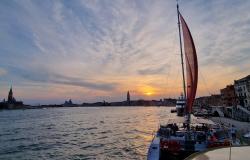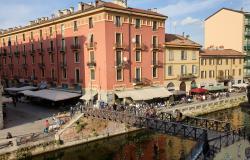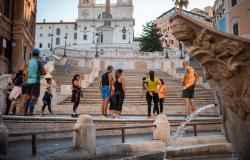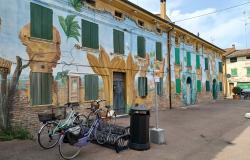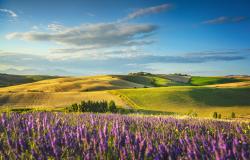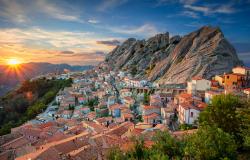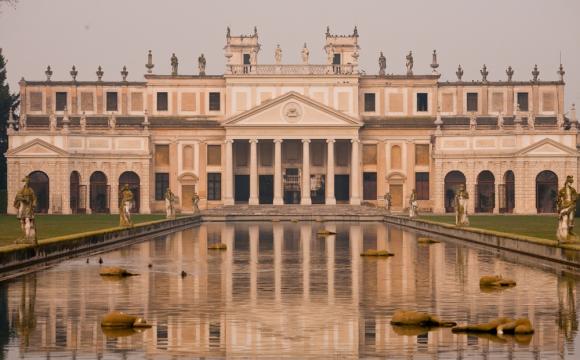Words and Pictures by Stefano Rossini
The Valsugana begins a few kilometres east of Trento and is the doorway to a real ‘Middle Earth’. A fertile plateau dotted with vineyards and in the distance high mountains, snow-covered all year round – heaven for skiers Castles look down from the hills and bell towers with the ionion-shaped domes rise above the towns. The magical scenery is reflected in the waters of rivers, alpine lakes andf ast-running streams.
 A holiday here is characterised by fresh, clean air, breathtaking views, walks and open air activities. But there is also plenty of culture, history and great food. From the ancient Romans to the First World War, events and peoples have left their mark.
A holiday here is characterised by fresh, clean air, breathtaking views, walks and open air activities. But there is also plenty of culture, history and great food. From the ancient Romans to the First World War, events and peoples have left their mark.
In winter it is a magnet for skiers and winter sports enthusiasts while in summer the shores of the lakes are packed with tourist swimming, boating or simply getting a tan.
Trentino's largest lake
 The geography of the area is unusual. Two lakes, Caldonazzo and Levico, are separated by a long narrow ridge known as the Tenna. Coming from Trento you first see the larger Lake Caldonazzo, surrounded by gentle slopes with wide roads along its shores.
The geography of the area is unusual. Two lakes, Caldonazzo and Levico, are separated by a long narrow ridge known as the Tenna. Coming from Trento you first see the larger Lake Caldonazzo, surrounded by gentle slopes with wide roads along its shores.
Many small villages face its blue waters, such as San Cristoforo al Lago, Calceranica, Tenna and the largest, Caldonazzo. It is a typical Trentino village lying in a broad valley, its narrow streets lined with old houses with frescoed walls, small windows and massive wooden shutters.

Shades of Northern climes

Many parts of the lake, indicated by signs, are protected to preserve the biotopi or areas of great natural value, such as the cane-brakes. The lake is rich in fish, especially pike and carp, and fishing is one of main activities.
 Lake Levico has only one shore suitable for bathing but it is very picturesque. It is separated from the road and hotels by a path through trees and meadows. There are benches where you can sit and relax, or you can simply walk, or try to feed the ducks (make sure they are in a good mood!).
Lake Levico has only one shore suitable for bathing but it is very picturesque. It is separated from the road and hotels by a path through trees and meadows. There are benches where you can sit and relax, or you can simply walk, or try to feed the ducks (make sure they are in a good mood!).
Not far away are two quays where you can hire a rowing or sailing boat. Along this lake shore runs Via Segantini where the majority of the hotels and a large sporting complex are located. You can walk around the rest of the lake where the paths are narrower. Here in autumn, people go in search of mushrooms.
Levico town
 Another charming footpath leads from the lake directly into the heart of the little town of Levico.
Another charming footpath leads from the lake directly into the heart of the little town of Levico.
Crossing a wooden bridge, you arrive at Corso Garibaldi, the main street, with shops selling typical Tyrolean stoves and local handicrafts, and lined with bars and hotels in the classical Liberty style for which the town became famous in the last century. All the town’s streets are elegant and colourful and you can find food shops selling mushrooms (boletus, finferli and chiodini), polenta, sausages and speck (smoked ham).
The secret of speck
Trentino’s pork products and cured meats, some of which are made by hand in Levico, are particularly prized, such as the spicy, peppery prosciutto and a delicious capocollo ham.
Also unequalled are game products like prosciutto made from wild boar and venison; delicately smoked salami made from capriolo (roe-buck), camoscio (chamois), wild boar, deer or goose; not to mention speck, the most prized cut of pork prosciutto which is first marinated in salt and spices, then left for a month before being expertly smoked over juniper wood and berries, and finally left for months and months to age before reappearing in all the most typical Trentino dishes.
To work off all that lovely food, take advantage of the almost infinite sporting opportunities of this region. You can go rowing, sailing and swimming in the lakes, walking and jogging on the foot-paths, or hire a mountain bike or go horse riding in the Vezzena highlands or Monte Lagorai.
 Winter in Valsugana means skiing, thanks to the ski trails of Panarotta 2002 (with its 15 kilometres of easy and medium-difficulty trails and its six lifts with a total hourly capacity of 5000 people.
Winter in Valsugana means skiing, thanks to the ski trails of Panarotta 2002 (with its 15 kilometres of easy and medium-difficulty trails and its six lifts with a total hourly capacity of 5000 people.
The centre provides a ski school, equipment rental, first-aid service, Alpine refuge and self-service restaurant with local cuisine) and the Altopiano di Vezzena.
There are also ski-mountaineering itineraries and snowshoe excursions into the Lagorai.
Whenever you choose to visit the Valsugana, you’re sure to find something to your taste.

